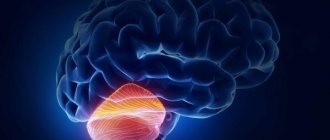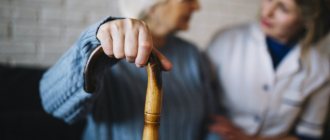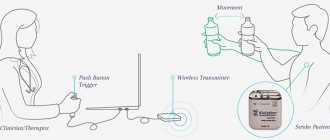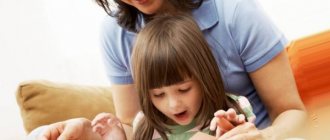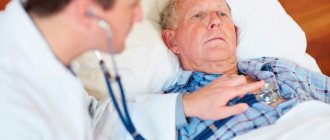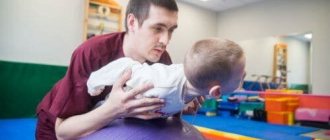Very often, exercises to improve the condition of the musculoskeletal system are done in a sitting or lying position. Such body positions do not allow the full functionality of the child’s body to be revealed. Unfortunately, very often the load is not given in a vertical position, which reduces the effectiveness of such training several times. After all, the child receives a low level of activity, and this has a bad effect on the condition of the whole organism. That is why the Gross simulator was developed to solve problems with impaired functionality of the musculoskeletal system in children.
What's special
The Gross simulator for children with cerebral palsy is an excellent aid for the rehabilitation of a growing organism. This is a modern and unique device that allows you to move not only throughout the entire space, but also around its own axis, which is also important. The simulator is built in such a way as not to hinder the movements of the upper and lower extremities, and a special insurance has the maximum level of safety and protects against falls.
The Gross simulator makes it possible to perform various exercises that, if performed regularly, will maximize the quality of life of children with cerebral palsy. The method of using the simulator has been tested and is effectively used for disorders of the musculoskeletal system not only in children, but also in adults.
As for children with cerebral palsy, conducting classes with a gradual increase in load can develop good motor skills in them. It becomes possible not only to maintain an upright body position, but also to walk and perform various movements.
Exercise therapy for stretching
A set of stretching exercises for children with cerebral palsy also helps to increase flexibility. It allows you to reduce the severity of the pathological condition of the back and spine, improves the condition of the affected spinal cord, as well as its nerve endings. Moreover, this kind of exercise therapy for children with cerebral palsy allows them to strengthen the muscles of the limbs, which, of course, affects more confident movements of the arms and legs.
- The child must be seated in the starting position on the floor so that the legs are straightened, and the torso along with them creates a right angle and is perpendicular to the floor. While exhaling, the baby should try to bend down so that he can reach his toes with his fingers. At the same time, the help of a physical therapy instructor for children with cerebral palsy in this exercise is that he helps to lower the body even lower, applying gentle pressure on the back so that the child’s forehead also touches the legs.
- While lying on his stomach, the child extends his arms along his body. Then he turns his hands towards the floor and focuses on them. Gradually resting on his hands and raising his chest above the floor, the baby trains stretching of the biceps muscles, imitating push-ups of a healthy person. An adult must ensure that the child does not throw back his head and that his breathing is calm and even.
- The next exercise is reminiscent of a lower abdominal press with legs thrown back in the complex of exercises for a healthy person. Starting position – a child with cerebral palsy lies on his back, arms extended along the body. On the count of “one”, he slowly and smoothly raises his straight legs above his head and lifts them up behind his head, touching his toes to the floor above the top of his head and without bending them at the knees; on the count of “two” he returns them just as slowly to their original position. Throughout the entire exercise, an adult controls the process and makes sure that the hands do not leave the floor.
- Starting position – sitting on the floor with your legs apart. The first movement is to bend the right leg so that its heel touches the inner thigh of the left leg, the second movement is to bring the foot of the left leg closer to the knee joint of the right leg. After these manipulations, the right hand is moved to the left knee in a girth while supporting the left leg, and the movement of the left hand moves it to the opposite side of the waist behind the back. The adult turns the child's head to the left and tilts it so that the chin touches the left shoulder. In this case, the right knee remains constantly pressed to the floor.
This set of exercise therapy exercises for children with cerebral palsy, when performed regularly day after day, contributes to a significant improvement in the condition of the little patient. Such therapeutic gymnastics is especially effective when it is carried out at an early stage of the child’s growing up. And the sooner, the better.
Why use a Gross machine?
This device is intended not only for children with visible signs of cerebral palsy, but also for children with problems in the musculoskeletal system. With its help, there was an excellent opportunity to solve several very important problems:
- Coordination develops well. This is very difficult to do with regular exercises on a mat.
- Muscle relaxation, if necessary, and other methods are difficult to achieve.
- Provides an excellent full body workout. Muscles and joints are involved in the work. In this case, dynamic, static and spatial loading is carried out.
The Gross simulator helps to effectively restore motor skills after spinal cord injuries, stroke, cerebral palsy and various problems of the musculoskeletal system.
Scientific activity
The Center carries out many years of research work on the development of new rehabilitation technologies and the implementation of methodological programs with the priority use of physical education as a form of motor activity for disabled children with various motor disorders, taking into account their individual characteristics, physical and functional development. Scientific research is carried out in the field of functional diagnostics, pedagogy and biomechanics.
The purpose of the study is:
justification of the need for continuous physical rehabilitation of a disabled child from an early age;
development of individual programs of rehabilitation exercises and methods of their correction to increase the efficiency of the physical rehabilitation process;
testing and implementation of new methods for diagnosing the motor and functional state of disabled children and improving rehabilitation methods;
testing and implementation of new training devices in the rehabilitation process of disabled children with various motor disorders;
determining the characteristics of the reaction (adaptation) of the body of disabled children to physical activity;
development of functional standards and tests to assess the motor and functional abilities of disabled children.
Scientific activities are carried out within the framework of research work of the Federal State Budgetary Institution "Federal Scientific Center for Physical Culture and Sports of the All-Union Scientific Research Institute of Physical Culture" (FSBI FNTs VNIIFK) from 1996 to the present. From 2011 to 2015, a long-term program was carried out on the topic: “Development of effective methods for developing statokinetic stability and coordination of movements in children with movement disorders.” From 2021 - “Study of the influence of physical exercises performed with the use of training devices on indicators of supporting ability in the development of motor skills of disabled children.”
Scientific personnel. Currently, the Center employs 14 instructors-methodologists with higher education, of which 5 are candidates of pedagogical sciences, 2 specialists who have passed candidate exams to write dissertations. During the existence of the Center, 6 candidate dissertations were defended, 4 of them under the guidance of Ph.D., Associate Professor N.A. Gross. The topics of dissertations reflect the problems of rehabilitation of disabled children. The main results of the activities are discussed in a team of employees, reported at scientific and methodological conferences, and reflected in books, scientific articles, and teaching aids written by the Center’s employees.
The Center's staff have published the following books: 1. “Physical rehabilitation of children with musculoskeletal disorders” Under the general editorship of N.A. Gross. M. Soviet sport. 2000. 2. “Modern methods of physical rehabilitation of children with impaired musculoskeletal system functions” Under the general editorship of N.A. Gross. M. Soviet sport. 2005. 6 Methodological manuals were published for parents of disabled children and to help families with children with special needs. Articles written by Center staff are published in journals:
“Bulletin of Sports Science” - a scientific and theoretical journal on the problems of sports science (VNIIFK, Ministry of Sports of the Russian Federation);
“Scientific Notes” is a scientific and theoretical journal of the University. P.F. Lesgafta;
“Life with cerebral palsy. Problems and Solutions” - informational and practical magazine;
"Resort Gazette";
other popular science magazines, as well as in Collections of articles of All-Russian scientific and practical conferences and All-Russian conferences with international participation.
In total, over the twenty-year period of the Center’s existence, more than 90 scientific and popular science articles have been published. The results of research work are reported at All-Union and International scientific and practical conferences, of which:
5 reports were made at government level meetings;
Simulator capabilities
The Gross simulator for children provides the opportunity for children to perform any body movements and at the same time regulate their load. It is worth noting that all the muscles of the body will be involved in the work. It is almost impossible to do this with exercises while lying on the floor.
Please pay attention to the fact that not only a simulator has been developed for children with cerebral palsy, but also a special technique that will make the classes as effective as possible. Experts recommend recording all the results in a diary so that you can do a comparative analysis and adjust the load level during regular training.
Work should only begin under the supervision of specially trained people. And only after the first results are achieved, you can start doing it yourself. The exercise system is designed in such a way that a child with cerebral palsy will lose fear of existing obstacles and the surrounding space.
Important Tips
The Gross simulator, a photo of which you can see in this article, will be very effective provided that you follow several important rules:
- Before each lesson, check the device for proper operation. There must be no visible defects or malfunctions, otherwise there is a risk of injury.
- At the initial stages, do not leave the child unattended, try to teach him to perform all movements as correctly as possible and gradually reduce this assistance to a minimum.
- The Gross simulator is assembled individually for each client, taking into account all the assigned tasks.
Results after use
It’s hard to believe, but with regular training, the functionality of the entire body will significantly improve. In most cases, children diagnosed with cerebral palsy have learned to move independently. Many of them improved their speech skills, which contributed to the opportunity to go to mainstream or specialized schools. The majority of children's psycho-emotional state improved.
Practice-proven effectiveness
Today, the following indicators can be noted when using the simulator for children with cerebral palsy:
- 20% of children diagnosed with cerebral palsy acquired the ability to move independently;
- 30% were able to go to general education institutions;
- 40% went to specialized schools;
- 50% intensified verbal and emotional communication after classes;
- 70% were able to improve their mental state;
- 75%, thanks to the exercises, reduced the pathological activity of tonic reflexes;
- 85% corrected and improved coordination of movements;
- 90% activated the ability to move independently, signs of which were previously absent.
Advantages of the mechanism over others
- The ability to correct the condition of the musculoskeletal system after injury or cerebral palsy.
- The ability to accurately select exercises, load, as well as the very structure of their implementation.
- Almost all muscles will take part in the training process, which cannot be said about the use of other devices and exercises.
- The simulator can be used for various muscle lesions, which will make it possible to form a properly functioning muscular system.
- A very important advantage is the ability to exercise in an upright position without assistance. And this does not mean that this device does not allow you to perform exercises horizontally.
- Any movement will be secured using a safety belt, so the simulator is absolutely safe.
Equipment
| № | Name and quantity |
| 1 | Mounting plate with ring for wall mounting (it is possible to manufacture fasteners for a monolithic concrete ceiling) – 2 pcs.
|
| 2 |
|
| 3 | Tandem roller – 1 pc. |
| 4 | Trapezoid with rotating block – 1 pc. |
| 5 | Elastic cords – 10 pcs. (it is possible to supply more rows for users weighing up to 80 kg, or to perform additional exercises) |
| 6 |
|
| 7 |
|
Basic types of exercises
It is not recommended to do the Gross simulator yourself. It is better to use a custom-made device. It's not difficult to master. It is important to consider the correctness of fastenings, purpose and safety of the structure. The exercises can be done standing, lying down, sitting on a chair or even in the air. You need to start with the most basic exercises. They must be performed with the help of specially trained specialists. At the initial stages, their help is extremely necessary. Over time, the child will be able to perform such movements independently.
The purpose of the simplest exercises is to let the child understand that he is safe during training and no one will leave him. He will learn to maintain the correct body position, his coordination and speech abilities will improve.
When the first stage is completed, and the baby has no negative emotions regarding this simulator, you can complicate the task and start moving. You should start with a warm-up, active-passive exercises, and you can continue with jumping and pushing off the surface with both legs. To teach a child to push off, you need to forcefully bend both legs with a small range of motion. By doing this exercise in the simulator many times, the baby will develop the ability to push off. You can gradually increase the load depending on the results. Over time, you can learn to take steps. The child must be protected against falls.
Such a device is not uncommon. However, it is recommended to order the Gross simulator from the manufacturer, and not take it from hand. Only a high-quality product, created specifically for the client, will help to form correct posture and hold the head.
The main thing that parents should have is patience and a desire to help their child. Don't count on very quick results. Experts recommend recording even the most minimal improvements. Only in this way can you choose the right treatment program and speed it up. Don't forget about the emotional component. The baby will do much better if he does the exercises in a good mood.
Exercise bikes
Exercise bikes are particularly effective in correcting cerebral palsy. You can use them in the gym or in a special center.
Many people are interested in the question of whether a child with cerebral palsy can exercise at home on a similar simulator. Of course it is possible, even necessary.
These devices help improve your walking skills. They show how long the child has been exercising, his pulse, and mileage.
In the future, you will be able to use regular bicycles for outdoor riding, as fresh air is an integral part of treating the disease.
All children enjoy using exercise bikes and get a lot of positive emotions from them. During use, the baby’s posture rapidly develops and muscles are formed.
Such devices are equipped with special designs and fasteners for pedals, which allows you to exercise safely.
You can practice on an exercise bike regardless of the weather and improve your health. Thanks to such manipulations, you can significantly improve the health of your baby.
